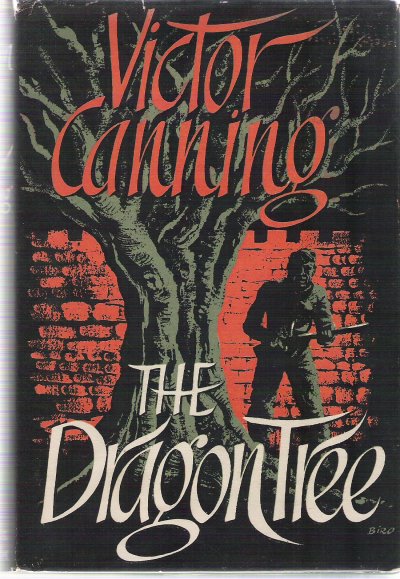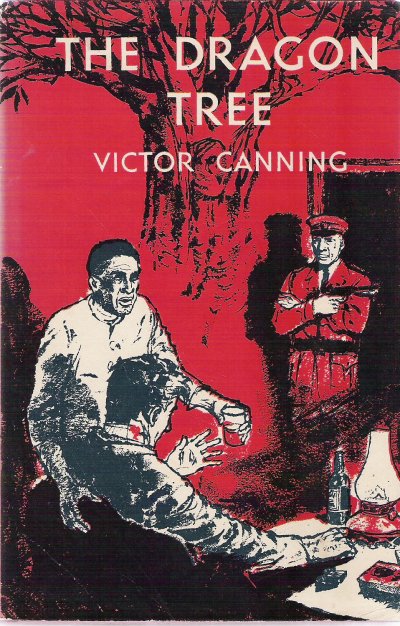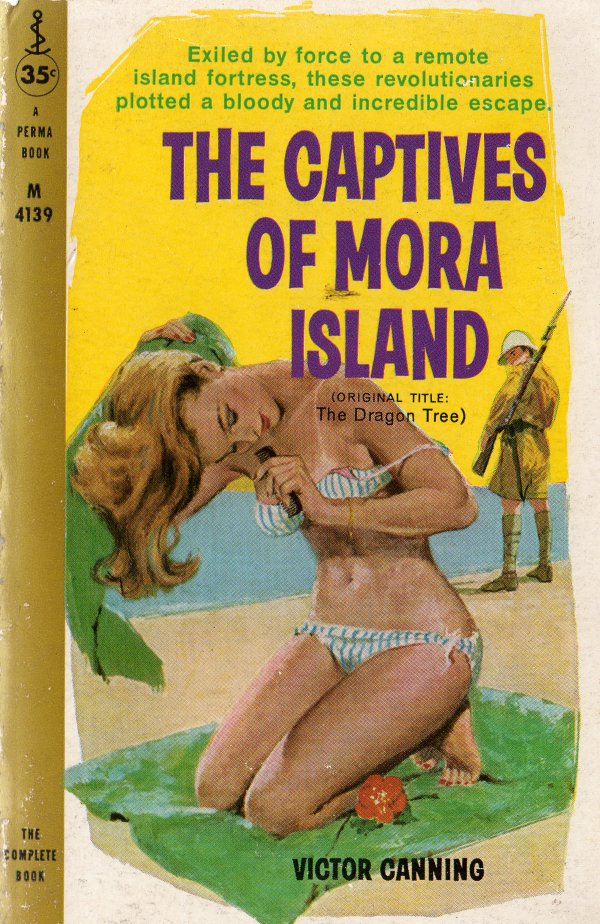The Book
The background to this book is an anti-colonialist struggle in "Cyrenia", clearly intended to be Cyprus. Major
John Richmond is assigned the duty of acting as jailer to Hadid Chebir and Colonel Mawzi, rebel leaders who have
been captured and sent into exile on Mora Island in the San Borodon group, an imaginary British dependency
somewhere near the Canary Islands. Chebir is the son of a talismanic rebel leader and is accompanied by his
British wife Marion. But meanwhile the rebels have hired a team of mercenaries to rescue them and wipe out the
garrison.
In this book Canning draws fairly explicitly on his military experience (six years including service in North
Africa and the invasion of Italy). The privates and NCOs talk and behave very like the characters described in
the short pieces Canning wrote for the Evening Standard "Did it happen?" series. The swearing is kept
down to 'bloody', 'damn' and 'Christ', but there is one place, one of only two in all his writing, where Canning
uses the f-word, here discreetly masked with dashes. It comes where an Arab servant is helping the squaddies in
the cookhouse:
In the kitchen while he waited to collect the meals, he was instructed in the rudiments of the
English language, beginning as troops always do with those simple, barrack-room obscenities which in the
uncomprehending mouths of foreigners always convulse the British soldier. To see Abou bow gently in the kitchen
and say, “I come fetch f—g food for bastards,” or some other gently mouthed scurrility made the
cook, Jenkins, reel against his stove, weak with laughter.
(Chapter 4)
|
Publishing History
Published by Hodder and Stoughton in 1958 at 15/- in a print run of 14,000, with some of the edition later
reduced to 7/6. There was a US edition by W.Sloane Associates in 1958 at $3.95 and a paperback under the title
The Captives of Mora Island by Perma Books at $0.35 in 1959. The Popular Book Club edition came out in
1959 at 4/3 and must have been very successful since secondhand copies of this edition are plentiful. The very
striking cover design for the first edition is by
the magnificent
Val Biro, designer of 3,000 book covers.
In more than one newspaper interview Canning reported with great relish
that he had sold the film rights for this book to Louis B. Mayer for
£30,000 just before Mayer's death in 1957. The film was not made, but a
screenplay was written by Nigel Balchin, famous not only as a novelist but
also for scripts for many films including Mandy, The
Man Who Never Was and parts of Cleopatra.
|





